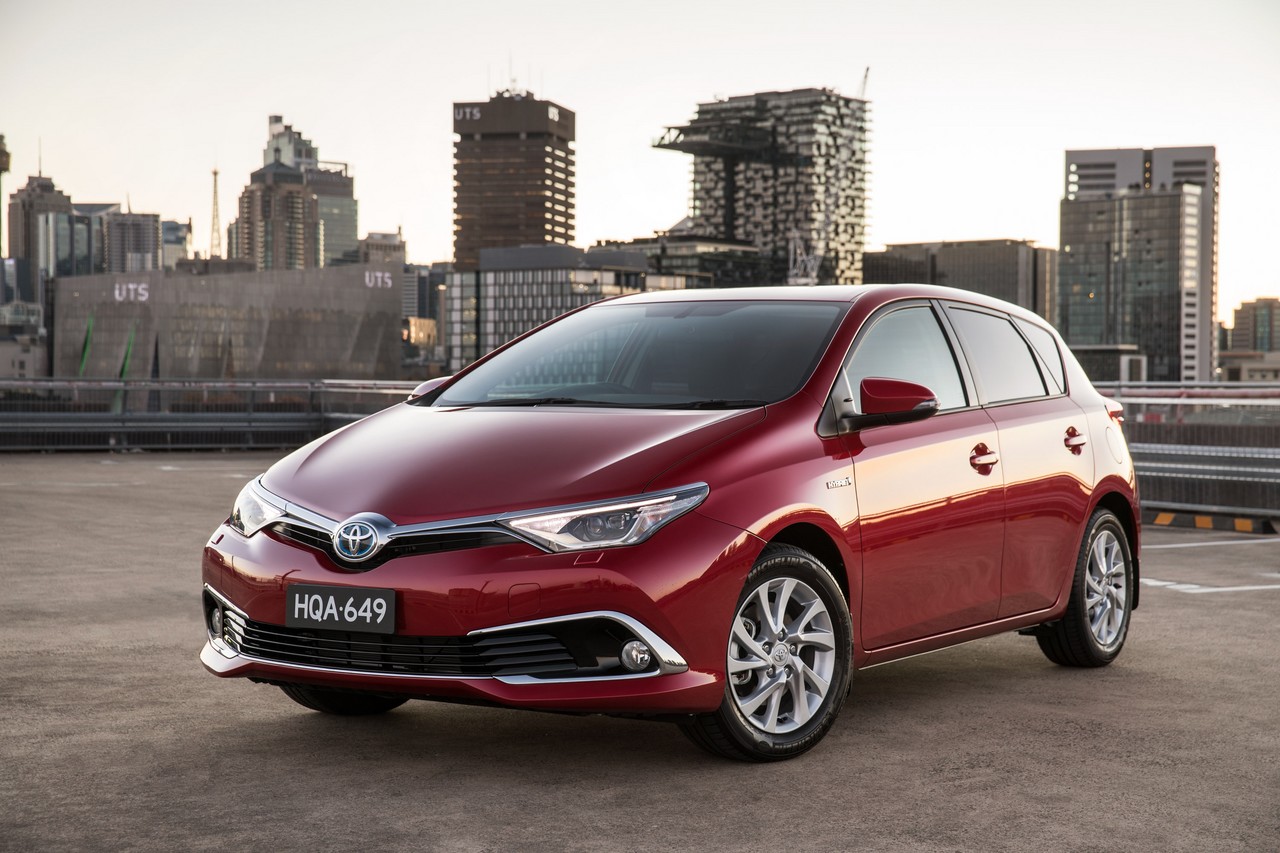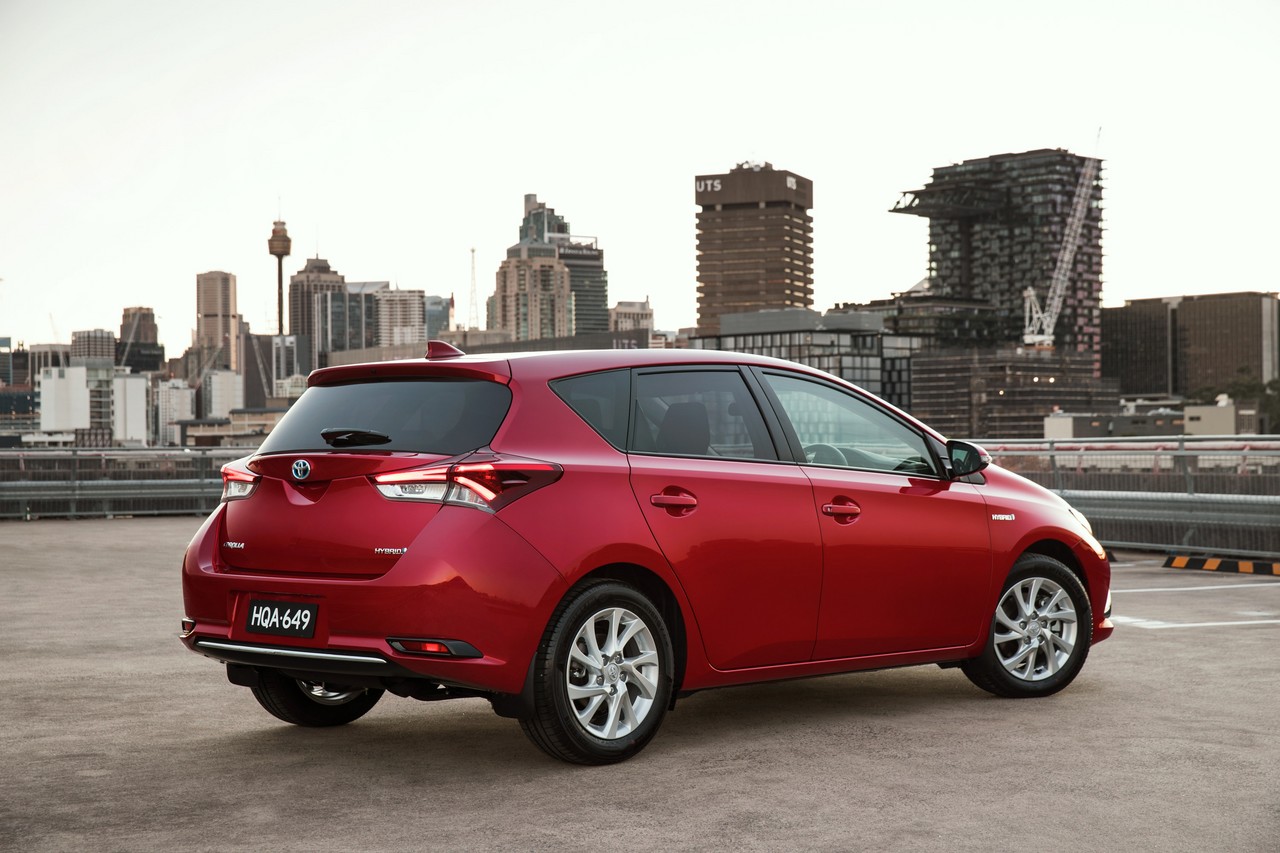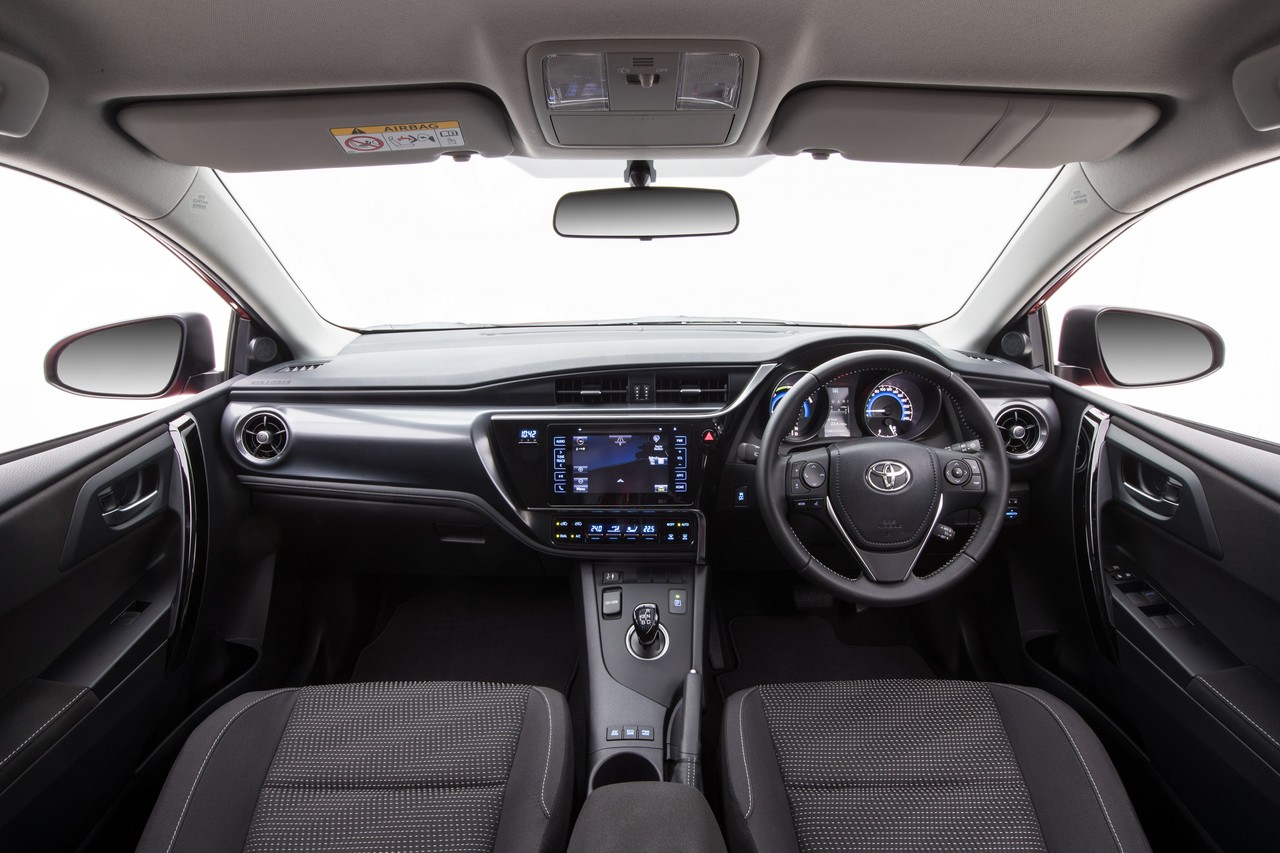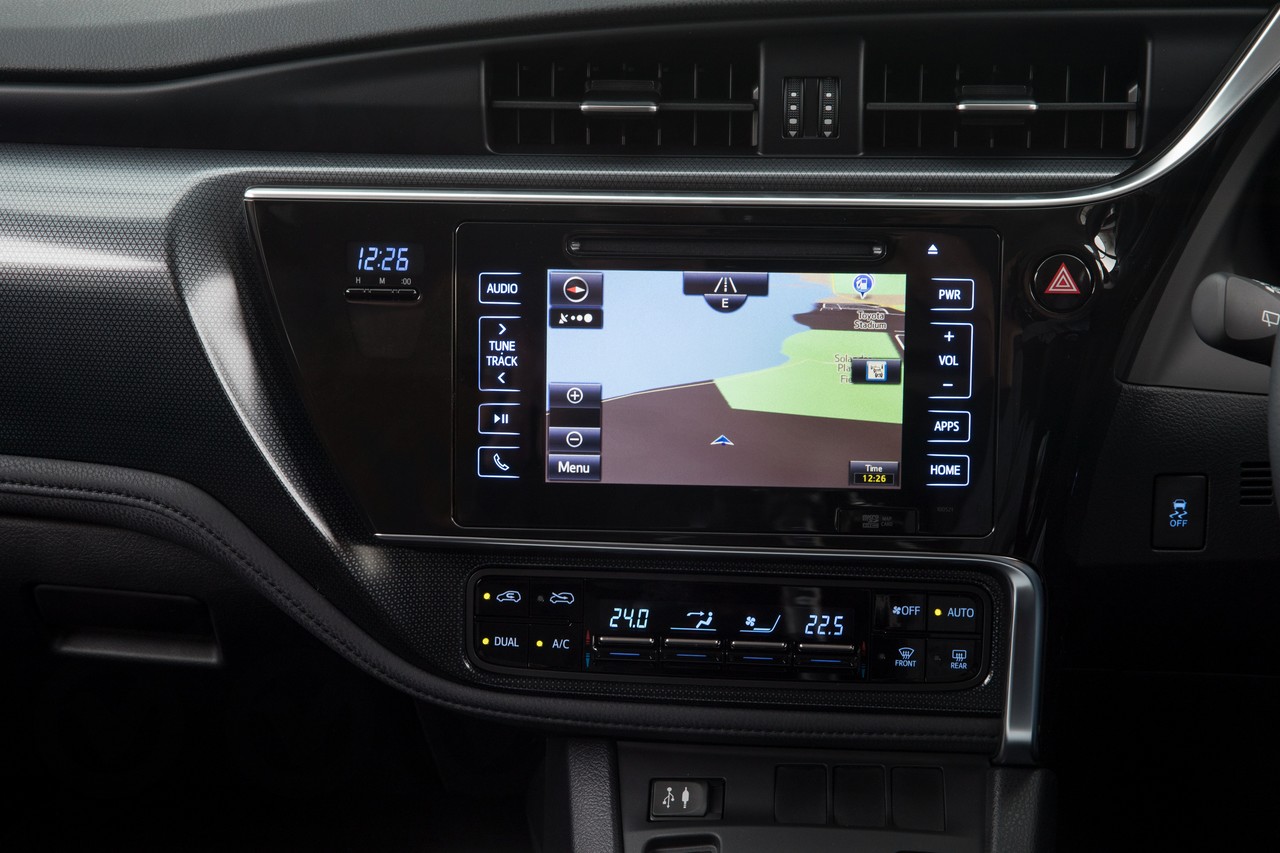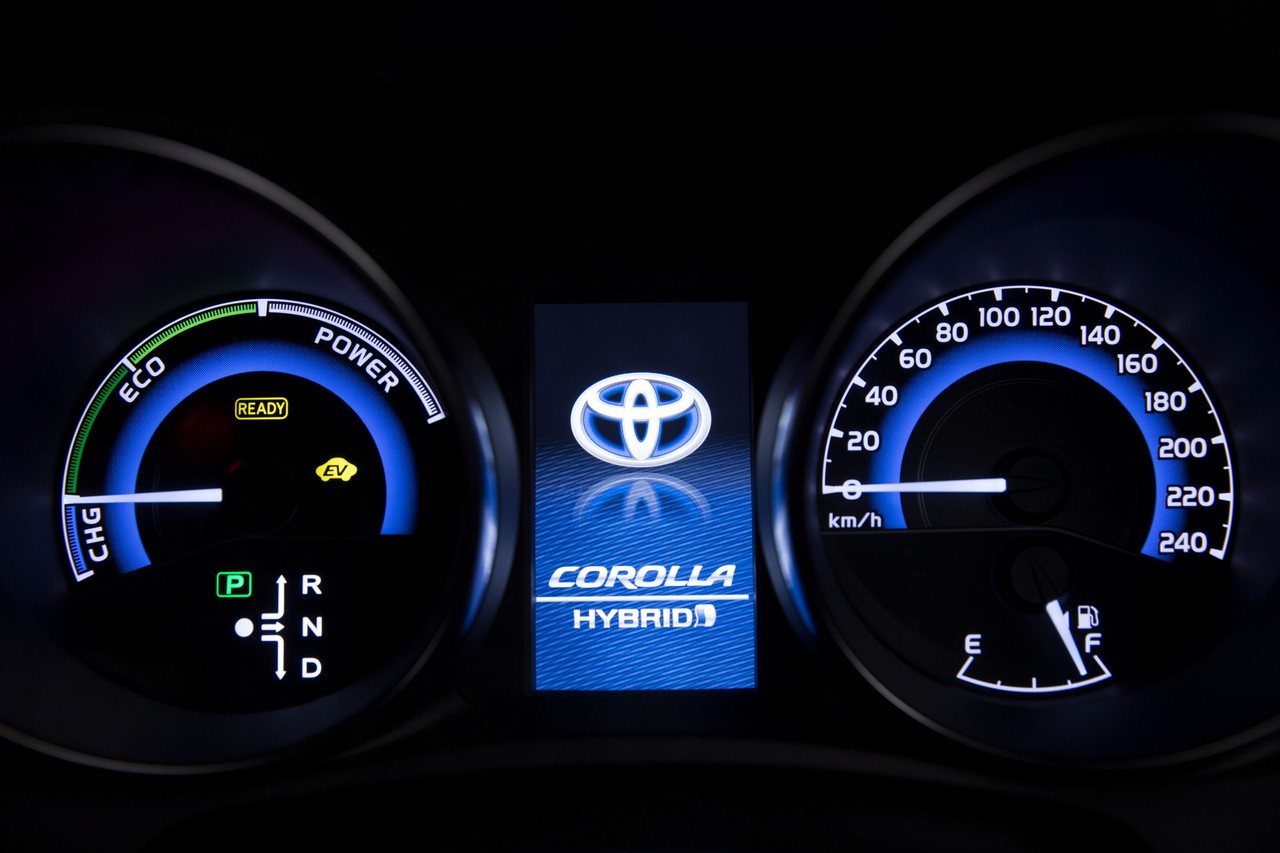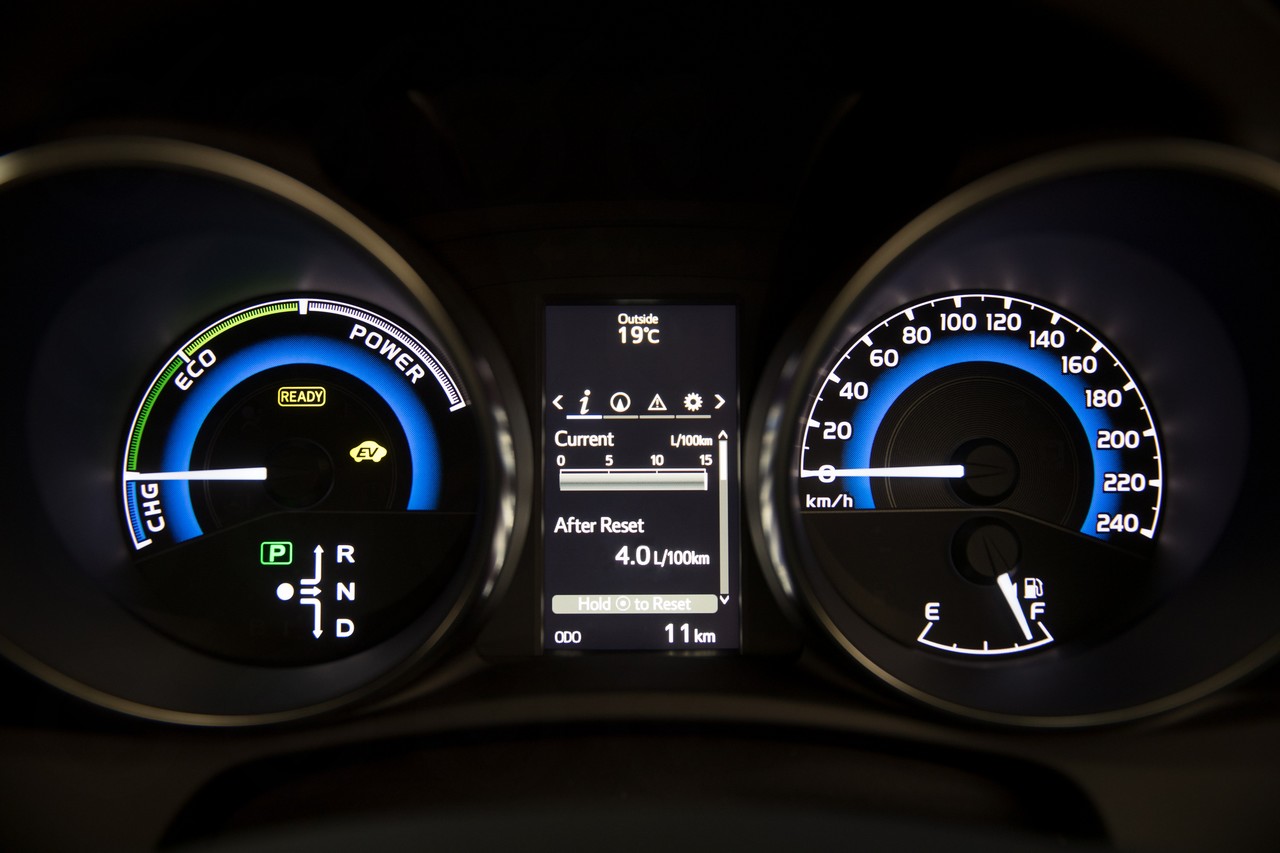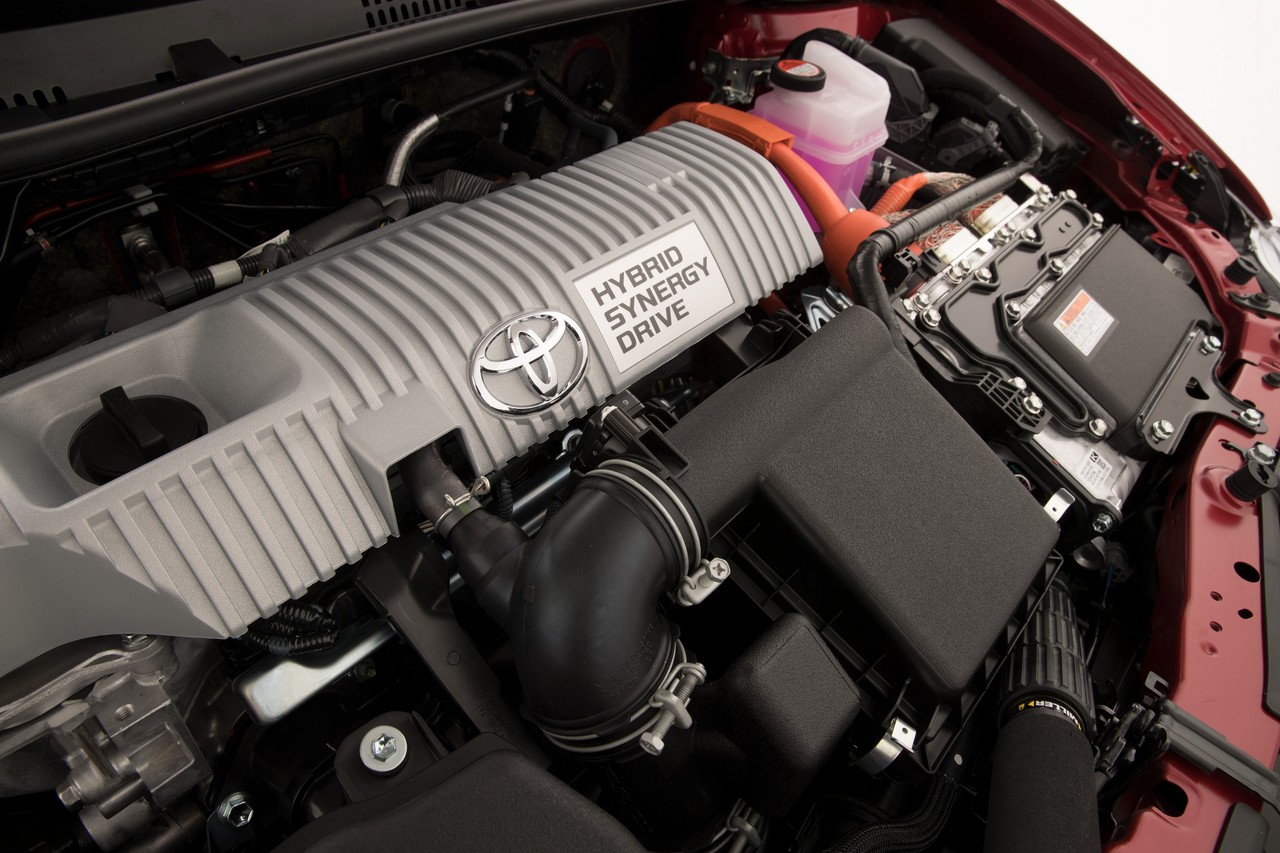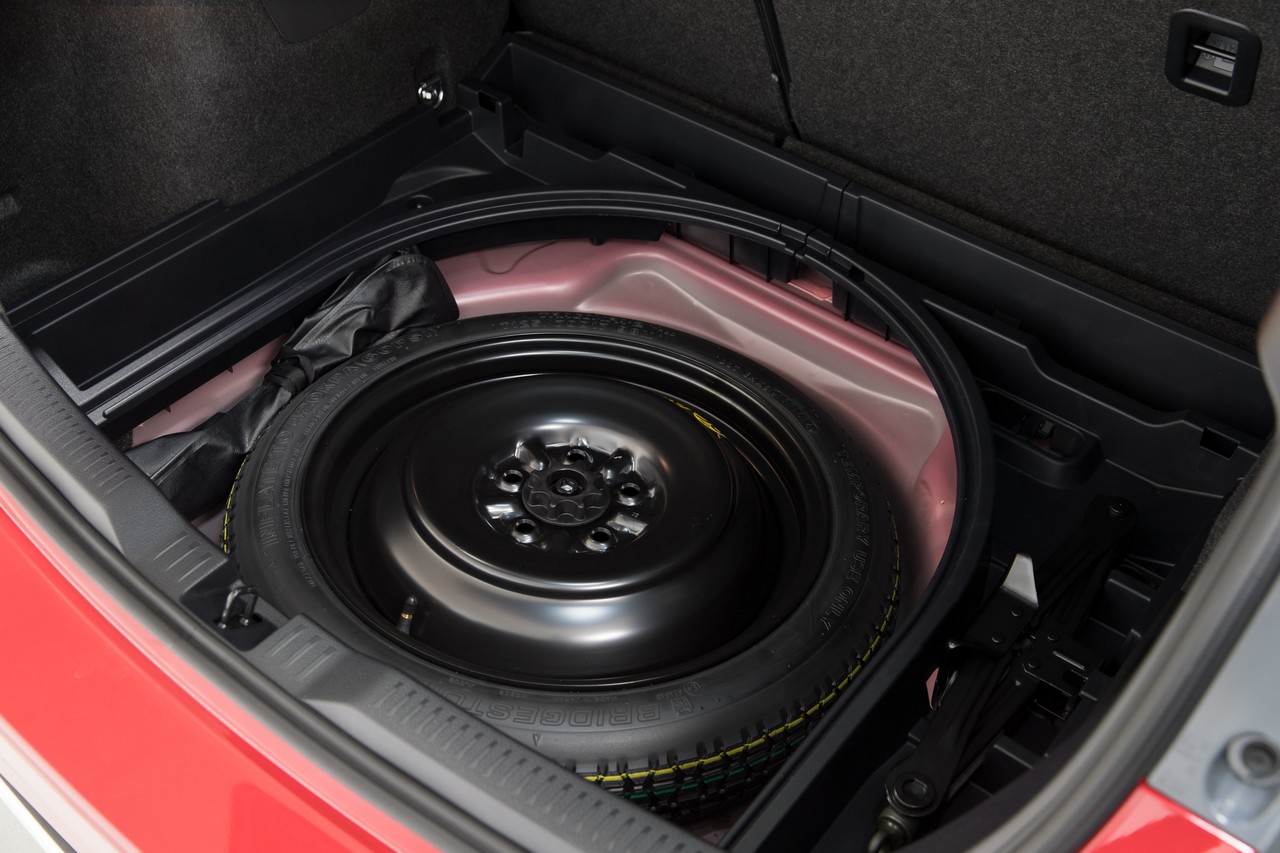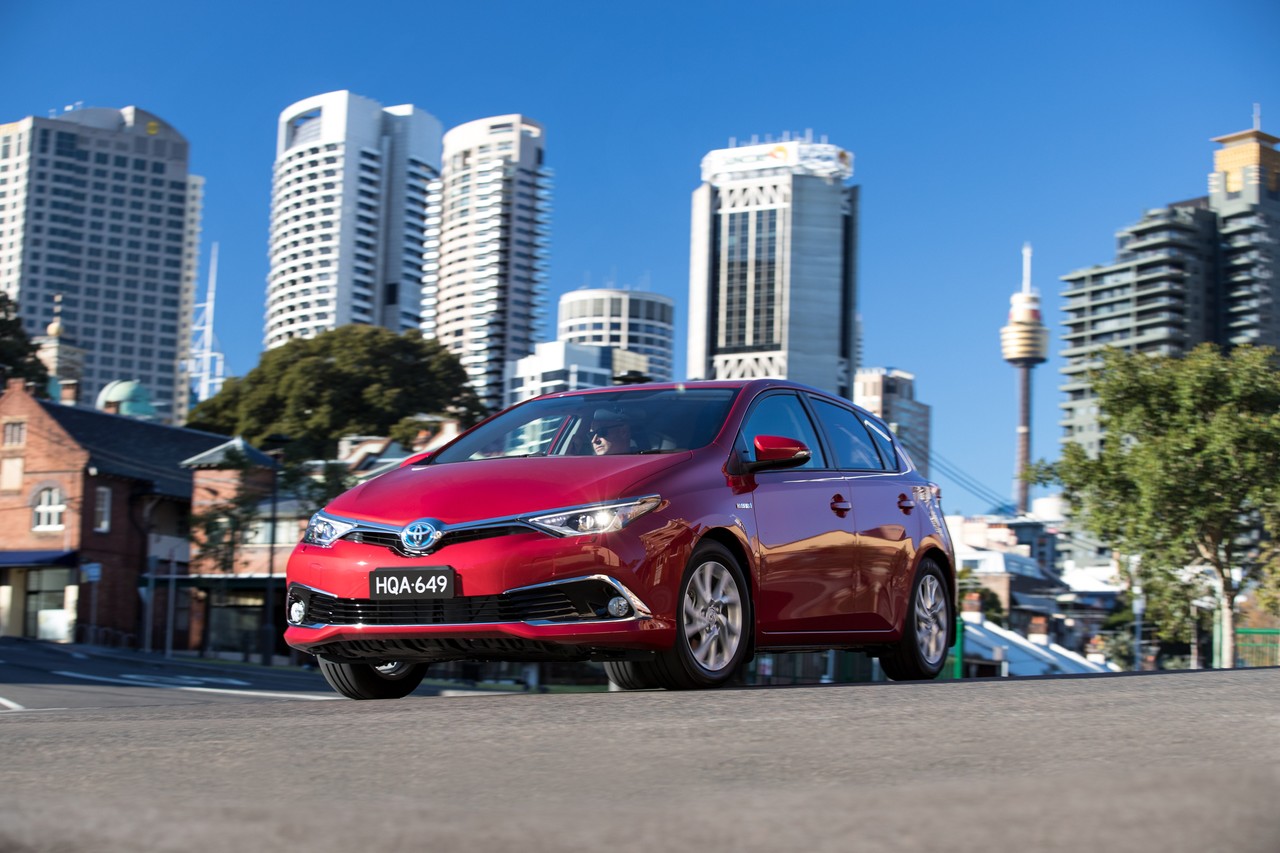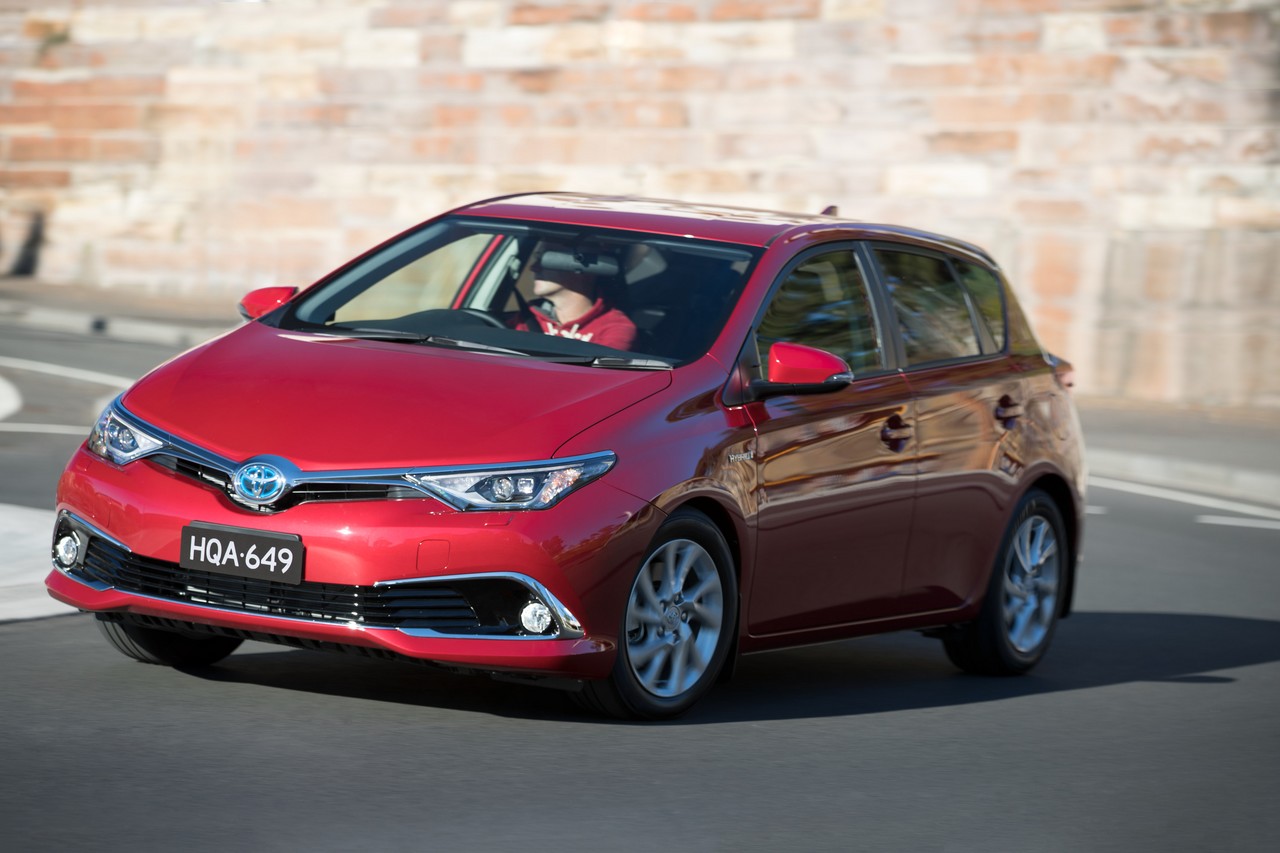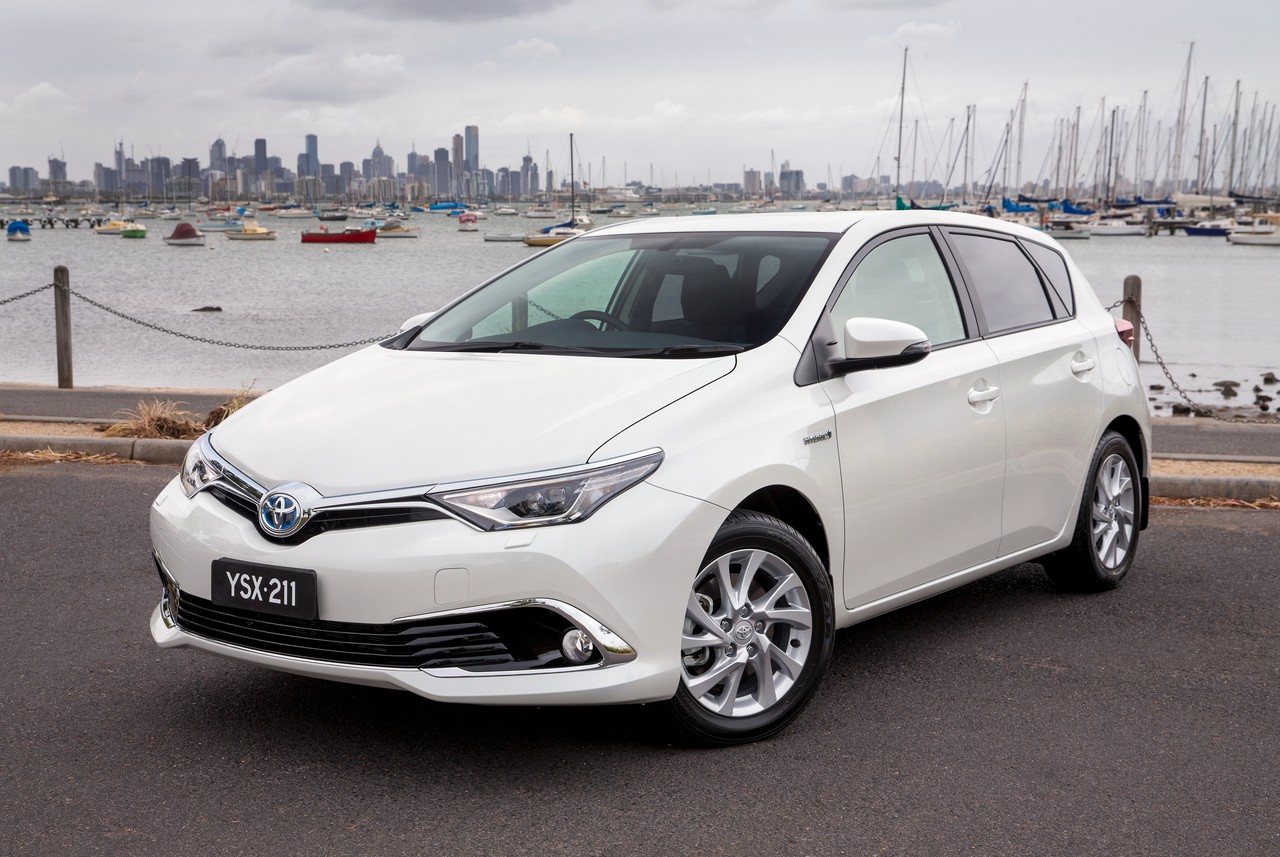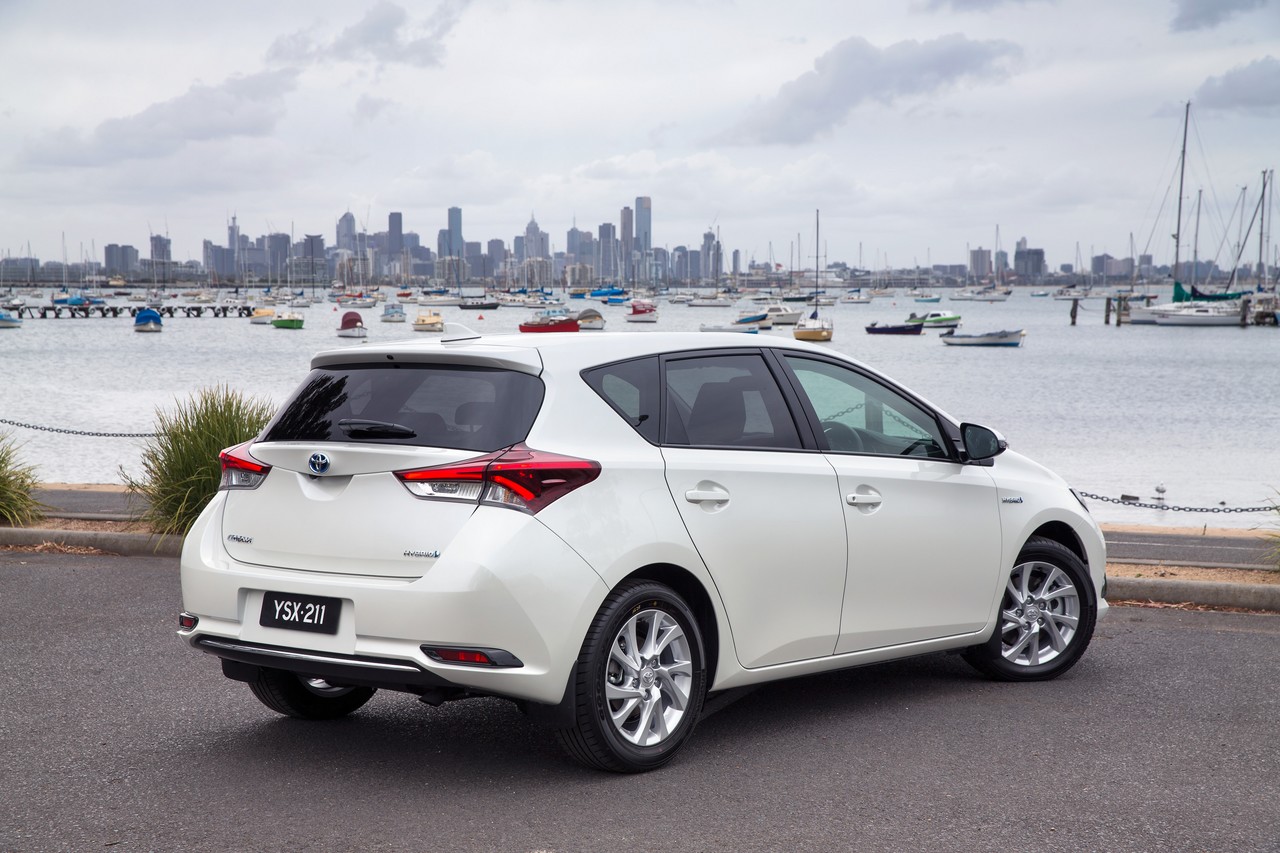
- Fuel-efficient and quiet hybrid powertrain
- Comfortable ride
- Bi-LED headlights and satellite navigation fitted as standard
- Limited headroom (front and rear)
- Underwhelming throttle response
- Overly sensitive brake pedal
- Low position of infotainment screen
- 100 kg of electric motor and batteries blunt agility
- Steering precision falls short of class leaders
- Requires 95 RON premium unleaded petrol
Overview
Officially released in Australia in June 2016, the Toyota Corolla Hybrid was a small, five-door hatchback. Manufactured in Japan, the front-wheel drive Corolla Hybrid had the same powertrain as the Toyota XW30 Prius , i.e. Toyota’s 1.8-litre 2ZR-FXE Atkinson-cycle four-cylinder engine and a permanent magnet AC electric motor which drew power from nickel-metal hydride batteries. Upon its release, the Toyota Corolla Hybrid had a recommended retail price of $26,990 (excluding on-road costs).
2ZR-FXE engine and hybrid operation
The 1.8-litre 2ZR-FXE engine had a die-cast aluminium alloy block, an alloy cylinder head, multi-point fuel injection, double overhead camshafts, four valves per cylinder, Toyota’s ‘Variable Valve Timing with intelligence’ (VVT-i), cooled exhaust gas recirculation, direct ignition and a compression ratio of 13.0:1. As an Atkinson cycle engine, the 2ZR-FXE has a higher expansion ratio than a conventional Otto cycle engine, making the expansion stroke longer than the compression stroke.
Whereas the Toyota E180 Corolla hatchback used 6.1 litres of petrol per 100 km over the combined ADR 81/02 test cycle, the Toyota Corolla Hybrid required 4.1 litres per 100 km.
When stationary or coasting, the petrol engine would switch off and almost seamlessly restart when required. Energy not required for propulsion was converted to electricity and regenerative braking also enabled kinetic energy to be converted into electric energy; similarly, a gear lever enabled the driver to select ‘B’ for engine braking. The Corolla Hybrid had three selectable drive modes: ‘Power’, ‘Electric’ (for electric power only up to 45 km/h and up to 2 km) and ‘Economy’ (for maximum economy).
| Details | Trans. | Peak power | Peak torque | |
|---|---|---|---|---|
| Petrol engine | 1.8-litre 2ZR-FXE Atkinson cycle petrol I4 | CVT | 73 kW at 5200 rpm | 142 Nm at 3600 rpm |
| Permanent magnet AC electric motor | 650-volt nickel-metal hydride battery | 60 kW | 207 Nm | |
| Combined | 100 kW | N/A |
Dimensions
The Toyota Corolla Hybrid was 4330 mm long, 1760 mm wide, 1475 mm tall (including roof antenna) and had a 2600 mm long wheelbase, while its kerb weight was 1365 kg.
Suspension and steering
The Toyota E180 Corolla Hybrid had MacPherson strut front suspension with a stabiliser bar and double wishbone rear suspension; both the front and rear suspension utilised coil springs and gas-filled dampers. Furthermore, the Corolla Hybrid had rack-and-pinion steering with electric power assistance; the steering required 2.67 turns from lock to lock and provided a turning circle of 10.4 metres.
Safety equipment
Standard safety equipment for the Toyota E180 Corolla Hybrid included dual front airbags, a driver’s knee airbag, front side airbags, full-length curtain airbags, ABS, electronic brake force distribution, brake assist, electronic stability control, traction control and front seatbelts with pre-tensioners and load limiters.
From January 2017, the Toyota E180 Corolla Hybrid could be specified – as a $750 option – with Toyota’s ‘Pre-Collision Safety System’ (PCCS) which used a windscreen-mounted camera and LIDAR (light detection and ranging) sensor to monitor objects in front of the vehicle. PCSS included the following technologies:
- Forward Collision Warning (FCW) with Autonomous Emergency Braking (AEB): if there was a risk of collision with an object in front of the vehicle, a warning tone would sound to alert the driver. In its second stage, the system increased braking assistance for faster response. If the driver failed to respond, the system would automatically apply the brakes to reduce vehicle speed (i.e. autonomous emergency braking) and pre-tension the front seatbelts;
- Lane Departure Alert (LDA): could detect lane markings and would warn the driver via an audible tone if the vehicle was about to cross those markings without the driver having activated the indicators; and,
- Automatic High Beam (AHB): detected the headlights of oncoming vehicles and tail-lights of vehicles ahead, enabling the Corolla ZR to switch between high- and low-beam to avoid dazzling other drivers.
Brakes
The Toyota Corolla Hybrid had 296 mm by 28 mm ventilated front disc brakes and 259 mm by 9 mm solid rear discs.
Features: Toyota Corolla Hybrid
Standard features for the Toyota Corolla Hybrid included 16 x 6.5J alloy wheels with 205/55 R16 tyres, a six speaker sound system with a CD player, MP3-compatibility, auxiliary inputs (3.5 mm/USB/iPod), Bluetooth mobile phone connectivity with audio streaming and voice recognition, satellite navigation with a seven-inch touch screen and SUNA live traffic updates, dual-zone climate control air conditioning, cruise control, bi-LED headlights, LED daytime running lights, a reversing camera, 60/40 split and folding rear seats, remote central locking with proximity key (i.e. keyless entry), power windows and mirrors, tilt and telescopic steering wheel adjustment, push-button start, a rear 12 volt power outlet, trip computer and an immobiliser.
The Toyota Corolla Hybrid was also fitted with the ‘Toyota Link’ connected mobility system which included apps that assisted the driver to find destinations, petrol stations, weather information and roadside assistance.
Brochure
Related links
- Keen price and value for Toyota Corolla Hybrid (June 2016)
- Toyota brings hybrid performance to Corolla (February 2016)
